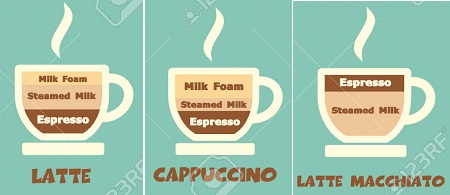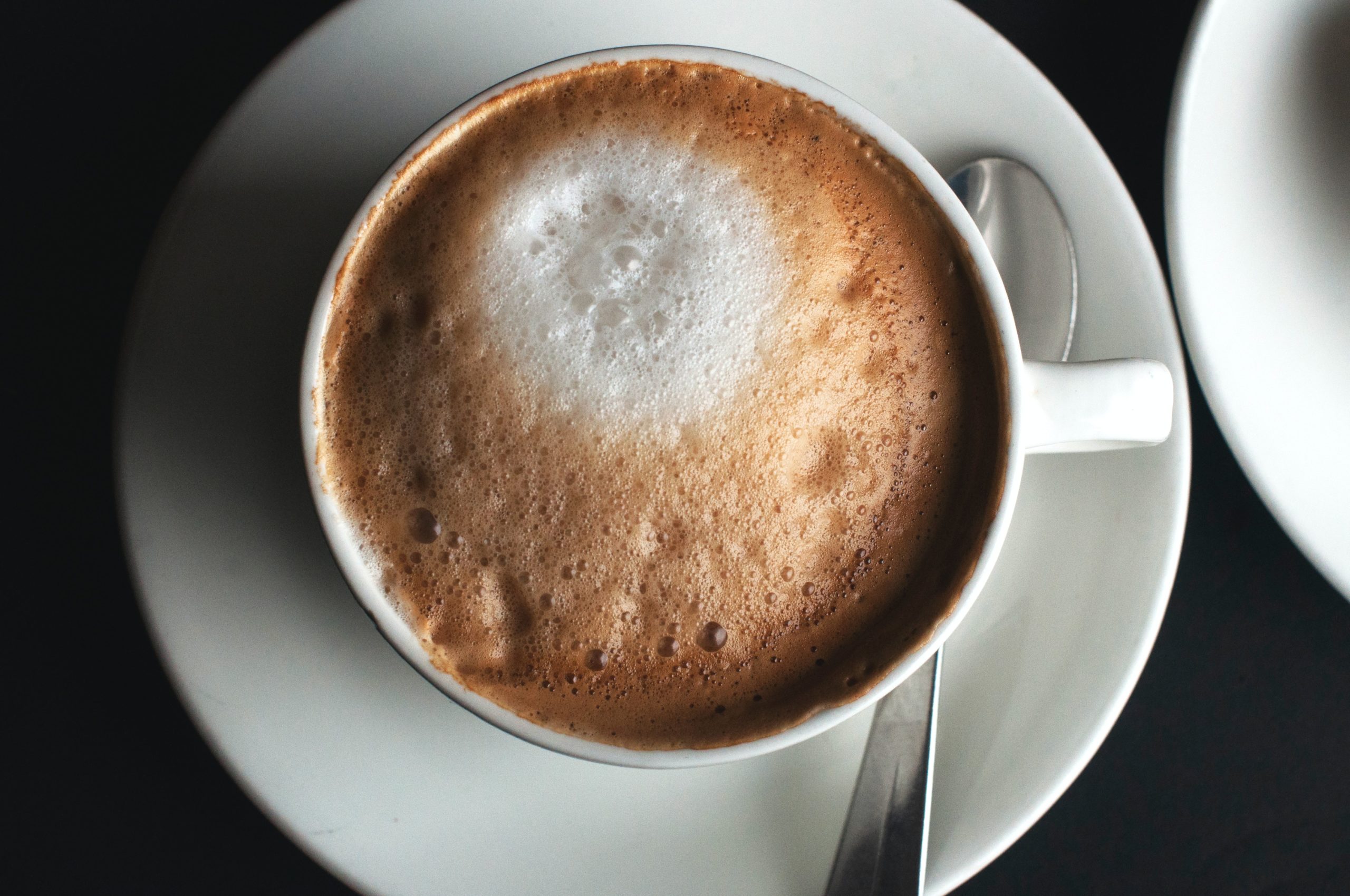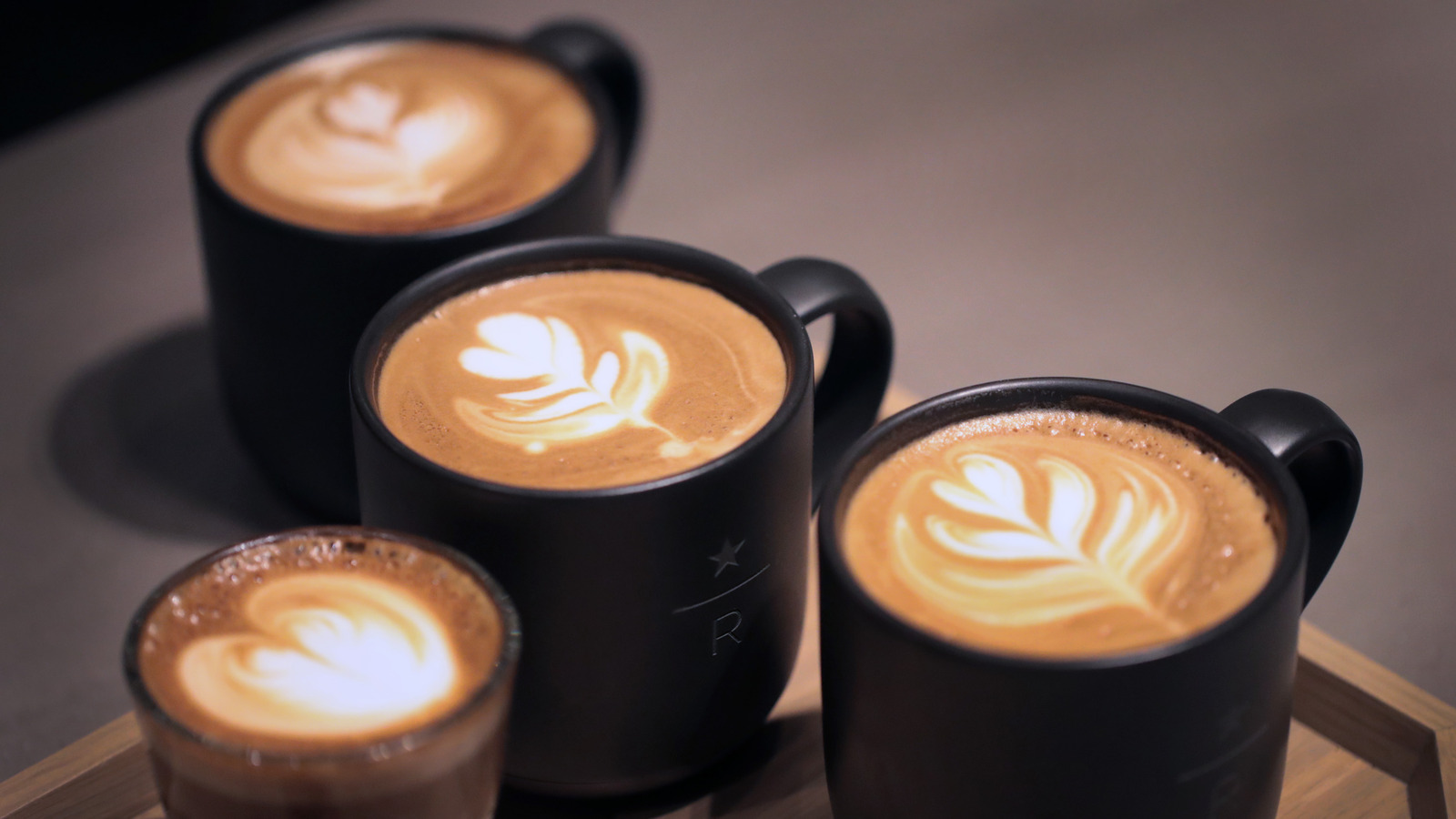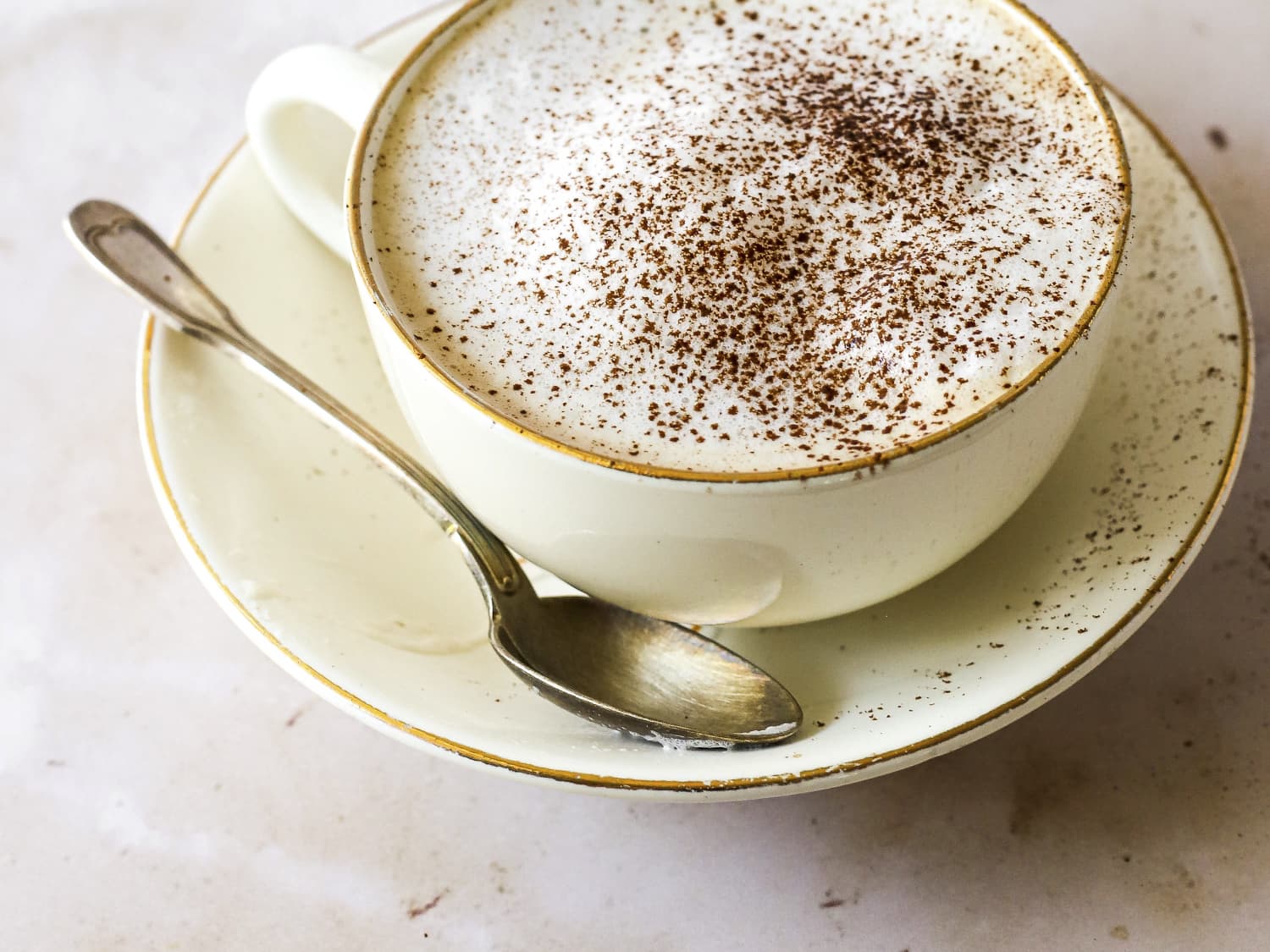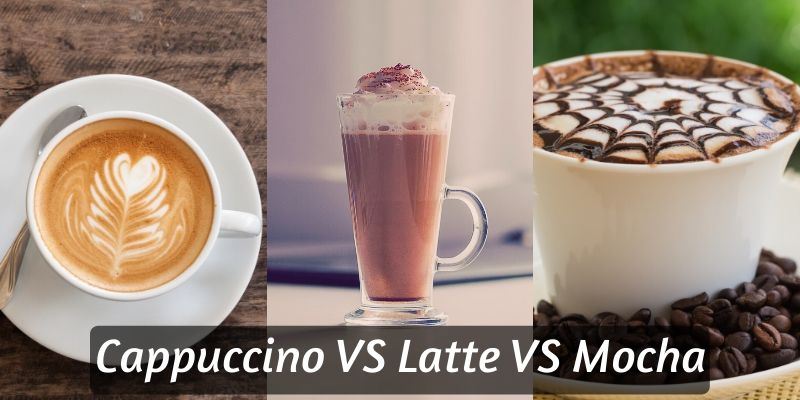For many coffee aficionados, visiting their favorite café feels like a daily necessity. Perusing the menu of enticing hot and cold espresso drinks can feel overwhelming with so many delicious options. Should you go with your typical vanilla latte? Or are you craving something new and different like a velvety cappuccino, intense macchiato, or frosty blended caramel frappuccino? Understanding the key differences between popular coffeehouse staples including lattes, cappuccinos, macchiatos, and frappuccinos is the key to confidently selecting your ideal caffeinated beverage.
This comprehensive coffee drink guide will explore everything from the ingredients to the textures to the nutritionals of these café favorites. Armed with insider knowledge on comparing coffee drinks, you can order your perfect cup customized to your preferences with coffeehouse expertise.
Comparing Key Characteristics of the Drinks
On the surface, lattes, cappuccinos, macchiatos, and frappuccinos may seem quite similar since they all contain espresso and milk. But when you examine the specifics of each drink, distinct differences emerge:

Coffee-to-Milk Ratio
The proportion of espresso to milk ranges widely:
- Lattes contain 1 part espresso to 3 parts steamed milk
- Cappuccinos have equal 1:1:1 parts espresso, steamed milk, and foamed milk
- Macchiatos features 4-9 parts espresso to 1 part milk
- Frappuccinos vary in coffee strength depending on the recipe
Milk Types Used
The choice of milk impacts texture and taste:
- Lattes use steamed milk for smoothness
- Cappuccinos incorporate steamed milk and foamed milk
- Macchiatos contain steamed and foamed milk but very sparingly
- Frappuccinos tend to use milk, cream, or dairy-based liquids
Sweeteners and Flavorings
Added sweeteners and flavors create indulgent variety:
- Sugars, syrups, sauces, spices, chocolate, cookies and fruit
- Vanilla, caramel, peppermint, pumpkin spice, etc.
Preparation Method

Brewing and mixing techniques differ:
- Lattes and cappuccinos prepared using espresso machines
- Macchiatos rely on espresso machines to pull concentrated shots
- Frappuccinos blended with ice like milkshakes
- Foam made with steam wands
Consistencies and Mouthfeels
Textures range from silky to frothy:
- Lattes have a smooth, creamy consistency
- Cappuccinos offers a rich, airy, velvety foam
- Macchiatos provide a strong espresso taste with slight foam
- Frappuccinos feature a chilled, thick, icy blended texture
So while they may seem the same at first glance, the drinks diverge in many small but significant ways. Let’s explore those differences in detail so you can determine your perfect coffee drink match.
Examining the Ingredients That Build Distinct Flavor Profiles
Every sip of a latte, cappuccino, macchiato, or frappuccino begins with the same foundation: espresso. Understanding how each beverage builds on that base with milk, flavorings, and preparation techniques is key to appreciating what makes them special.
Coffee Base – Rich Espresso Concentrate
No matter what coffeehouse drink you order, the flavor starts with concentrated espresso. Espresso is made by forcing very hot water at high pressure through finely-ground coffee beans. This yields an intensely flavored caffeinated extract that forms the base for lattes, cappuccinos, and macchiatos.
For frappuccinos, the coffee base tends to be brewed coffee or a shot of espresso blended with ice and other ingredients. But whether served hot or cold, espresso is the starting point that adds bold, robust coffee flavor.
Steam Wands Expertly Texture Milk
One of the keys that elevates an ordinary cup of coffee into an extraordinary coffeehouse drink is the use of steamed and foamed milk. The hiss of steam wands frothing milk into microfoam is one of the most recognizable sounds in any cafe.
Baristas employ steam wands to heat and aerate milk to just the right temperature and consistency for integrating into each beverage:
- Lattes use steamed milk to achieve a hot, velvety texture
- Cappuccinos incorporate equal amounts of steamed milk and foamed milk
- Macchiatos contain a dollop of foamed milk topping the espresso
- Frappuccinos forego steamed milk, instead using chilled dairy products like milk, cream, or yogurt blended with ice
This foamed and steamed milk amplifies the flavor dimension of the drinks while contributing greatly to their mouthfeel and appeal.
Sweeteners Boost Enjoyment
One of the joys of coffeehouse beverages is customizing your drink to match your optimal flavor and sweetness preferences. Adding syrups, spices, and sauces can make basic espresso drinks into flavor journeys.
Popular sweeteners like cane sugar and honey balance acidity and add complementary notes. Flavored syrups infuse drinks with favorites like vanilla, caramel, hazelnut, chocolate, and many more options. Some indulgent recipes even incorporate cookies, candy pieces, or cake flavors into the blend.
Let your personal tastes guide you – do you like your coffee drink simple and pure? Or are you craving something more adventurous like a salted caramel mocha latte or snickerdoodle cappuccino? The choices are endless.
Milk Ratio Impacts Strength and Texture
One of the biggest differentiators between lattes, cappuccinos, macchiatos, and frappuccinos is the proportion of espresso to milk. This ratio has an enormous influence on the flavor intensity, sweetness, and consistency of the final beverage.
Lattes use about 1 part espresso to 3 parts steamed milk. This creates a drink with a milder coffee taste, a sweet profile, and a smooth, creamy texture. Lattes highlight the flavor of the milk while retaining an unmistakable coffee essence.
Cappuccinos contain equal 1:1:1 ratios of espresso, steamed milk, and foamed milk. With less milk than a latte but more than a macchiato, cappuccinos achieve a pleasant balance between the rich taste of espresso and the sweetness of the foamed milk.
Macchiatos feature a much higher concentration of espresso compared to milk, with a ratio of approximately 4-9 parts coffee to 1 part milk. This gives macchiatos an intense espresso flavor and aroma with just a hint of dairy from a dollop of foamed milk.
Frappuccinos can vary in coffee strength depending on factors like brew time and beans used in the coffee base. But since they also incorporate milk, cream or yogurt, frappuccinos manage to blend coffee taste with a creamy sweet profile.
Brewing Methods Matter
To coax the most flavor out of coffee beans, proper brewing techniques are vital. Each drink requires specific tools and procedures tailored to achieve the ideal taste and texture.
Lattes and cappuccinos start with pulls of concentrated espresso. Baristas carefully control factors like water temperature, pressure, and grind size when operating high-quality espresso machines to maximize extraction of the best flavors.
Macchiatos also rely on espresso machines to produce small volumes of intensely flavorful shots. Precise espresso brewing is crucial to prevent over-extraction and bitterness.
Frappuccinos necessitate sturdy blenders to thoroughly incorporate milk, coffee, and ice into a homogenous frozen blend. Parameters like brew time and ice addiction are fine-tuned to yield a thick, drinkable frappuccino texture.
And of course, steam wands are used to incorporate just the right amount and consistency of foamed milk to achieve each drink’s signature mouthfeel and appearance.
By mastering the ideal methods for preparing lattes, cappuccinos, macchiatos, and frappuccinos, baristas can consistently deliver sublime sips.
History and Origin Stories Behind the Classics
Italy Perfected Espresso Culture
It’s no accident that lattes, cappuccinos and macchiatos have Italian names. Italy’s bustling cafes pioneered espresso drinks as part of their culture of relaxation and sociability. Neighborhood bars known as “espresso bars” have long served as gathering places to sip coffee and share the news of the day.
According to legend:
- Lattes originated simply as warm “milk coffee” in Italy
- Cappuccinos were named after the brown robes of Capuchin monks
- Macchiatos’ name comes from the Italian for “stained” since a dash of milk “stains” the espresso
Over time, Italian coffee maestros honed their craft into an art form. They perfected techniques for achieving rich, thick crema frosting each shot of espresso. Texturing milk with steam wands became an essential skill. And they elevated coffee-making into a respected profession requiring extensive training.
This Italian mastery transformed espresso, milk, and foam into sublime combinations that delight palates worldwide. Even the Frappuccino traces its roots to Italian coffee-milkshake hybrids. When you sip a latte, cappuccino, or macchiato, you’re enjoying the fruits of Italy’s centuries-old coffee culture.
Customization Satisfies Individual Tastes
As specialty coffee exploded in popularity globally, baristas started putting unique spins on the classics. While staying true to their heritage, customized versions emerged:

- Latte art incorporates intricate free-poured designs
- Flavored lattes feature syrups like vanilla, caramel, or pumpkin spice
- “Wet” vs “dry” cappuccinos adjust the foam-to-milk ratio
- Caramel macchiatos add sweetness to cut the bitter espresso
- Frappuccino toppings range from fruit purees to candy pieces
This versatility allows for personal preferences. Seek out local coffee shops with great reviews for their specialty lattes and cappuccinos. Try unique macchiato and Frappuccino recipes you won’t find in chains. There’s a version tailored for every customer.
Comparing the Texture and Taste Profiles
One sip and you can instantly recognize the difference between a latte’s silky mouthfeel, a frappuccino’s icy thickness, or a cappuccino’s luscious foam. But what creates those distinctive textures that complement the coffee taste?
Lattes Achieve Creamy Smoothness
A latte’s signature texture comes from:
- A higher proportion of steamed milk makes it feel creamy and smooth
- Steaming incorporates tiny bubbles for consistency without heaviness
- Just 1cm of microfoam tops the drink without interrupting silkiness
- Iced preparation chills the drink without diluting the luxurious mouthfeel
Sip a hot latte, and the experience is like liquid velvet with subtle coffee undertones. An iced latte delivers creamy refreshment. Lattes appeal to those desiring a gently bold coffee experience.
Macchiatos Spotlight Espresso
Macchiatos take a different textural approach by:
- Using only a teaspoon of milk to spotlight the espresso taste
- Often incorporating rich, viscous ristretto shots
- Traditionally served in smaller 2-3 oz volumes to concentrate intensity
- Allowing no more than 1cm of foam to prevent diminishing aromas
The result is a strong, concentrated coffee extraction with barely restrained power. Macchiatos fill the mouth with robust coffee flavor, perfect for espresso purists.
Cappuccinos Achieve the Ideal Balance
Cappuccinos walk a delicious line between lattes and macchiatos using:
- The 1:1:1 ratio showcases espresso’s deep flavor without excessive bitterness
- Steamed and foamed milk mutes acidity but offers a rich texture
- Foam height around 1-2cm to achieve ideal dryness vs creaminess
- Artful topping of foam crowns the beverage beautifully
Each sip marries bold coffee with silky steamed milk and airy foam for a blissful melding of flavors and sensations. For those desiring a strong yet balanced coffee experience, cappuccinos are perfection.
Frappuccinos Provide Sweet Indulgence
Frappuccinos achieve completely different textures by:
- Blending strong coffee or espresso with milk, cream, and ice
- Incorporating thickeners like powder mixes to enhance viscosity
- Layering on whipped cream, drizzles, and crunchy candy bits
- Customizing flavors like cookies ‘n cream or s’mores
Slurping a cold, thick frappuccino topped with candy pieces transports you into the realm of the milkshake. But the unmistakable hit of caffeine brings you back. It’s a sweet indulgence and caffeinated boost in one treat.
As you can see, subtle differences in preparation techniques allow each drink to achieve textures uniquely suited to complement their flavor profiles.
Caffeine Content and Nutritionals Vary
While taste and texture profiles may be paramount in selecting your ideal coffee drink, it’s smart to also consider factors like caffeine levels and calorie loads. Fortunately, the differences in ingredients and ratios that distinguish lattes, cappuccinos, macchiatos, and frappuccinos also impact their nutritional.
Caffeine Level Aligns with Coffee Content
It follows logically that the caffeine content corresponds to the amount of coffee in the beverage:
- Lattes: Approximately 75mg caffeine per 8 oz
- Cappuccinos: Around 75mg per 8 oz
- Macchiatos: Roughly 150mg per 2-3 oz
- Frappuccinos: Can range from 50mg to over 200mg depending on the coffee used
So if you’re looking for a super-charged caffeine jolt, a bold macchiato or coffee-packed frappuccino may be your best bet.
Calories Influenced by Ingredients
The calorie count differs based on the recipe components:
- Lattes: About 150 calories per 8 oz
- Cappuccinos: Roughly 90 calories per 8 oz
- Macchiatos: Only 40 calories per 2-3 oz
- Frappuccinos: Can vary from 200 to 600+ calories depending on toppings
If limiting calories is a priority, macchiatos and “skinny” sized drinks are lighter options.
Fat Content Related to Milk
The quantity of milk and cream used affects fat content:
- Lattes: Around 5g fat per 8oz
- Cappuccinos: Approximately 3g fat per 8oz
- Macchiatos: Only 1g fat in 2-3 oz
- Frappuccinos: 5-15g of fat depending on the type of dairy used
Requesting low-fat or non-fat milk is one easy way to reduce fat while still enjoying your favorite coffee drink.
As you can see, the same factors that create unique flavors and textures in these hand-crafted drinks also influence their nutrition. So you can feel good enjoying your special coffeehouse treat, knowing exactly what’s inside.
Examining Popular Offerings at Favorite Chains
It seems every week brings the opening of a new independent coffee shop or expansion of a beloved regional chain. Big brands like Starbucks continue growing their global footprint while trendy upstarts challenge the status quo. But whether you prefer grabbing your daily latte from a massive international powerhouse or supporting your local low-key cafe, some menu mainstays endure.
Starbucks Sets Global Trends
As the biggest coffee purveyor worldwide with over 32,000 locations, Starbucks heavily influences coffee-drinking habits across the globe. Their menu features several signature classics:
- Lattes incorporating ristretto shots for concentrated espresso flavor balanced with micro-foamed milk
- Cappuccinos with a choice of single or double ristretto shots to modulate coffee strength
- Macchiatos featuring two ristretto shots with just a “stain” of foam in true Italian style
- Frappuccinos blending coffee, milk, and ice then customizing with mix-ins like whipped cream, syrups, or candy pieces
Starbucks also popularized some menu inventions like the Caramel Macchiato which layers vanilla-caramel syrup over espresso shots and then tops it with foamed milk for an indulgent riff on the tradition
RegionalChains Showcase Local Flair
Independent coffee shops tailor their offerings around regional tastes and locally sourced beans. East Coast highlights include:
- Boston/New England: Lattes brewed with distinctive Dunkin’ Donuts beans
- New York: Rich, intense espresso at Everyman Espresso noted for its “crema perfection”
- Philadelphia: Iconic burnt honey latte using honey sourced from a suburban bee farm
- Baltimore: Milky, smooth latte art featuring designs like ravens and orioles
West Coast favorites include:
- Seattle: Dark, brooding lattes and cappuccinos from the original home of Starbucks
- Portland: Nutty, citrusy cold brew options highlighting beans like Guatemalan Huehuetenango
- Bay Area: Bursting with third-wave roasters like Blue Bottle, Ritual, Philz, Verve and more
- LA: Trend-setting cafes like Intelligentsia and Go Get ‘Em Tiger offer unique drinks like matcha lattes
No matter where you live, local coffee shops reflect the personality and tastes that define their community.
Certain Menu Items Span the Country
Despite regional diversity, several favorite coffee drinks appear from coast to coast:
- Lattes – from simple to lavish, a familiar favorite
- Cappuccinos – especially popular in morning commuter routines
- Iced coffees – cold brew proving hugely popular in warmer climates
- Red-eye/black-eye – drip coffee combined with an espresso shot
- Americanos – hot water added to espresso to approximate drip coffee
- Cafe au laits – coffee and warmed milk, a lighter

